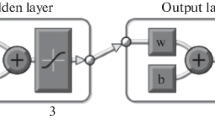Abstract
This paper presents a method to investigate the effectiveness of an operation process with a servicing expert system including an artificial neural network. A method of simulation testing with the use of computer technology was described. The theoretical basis was presented of the modelling of an operation process of objects in the form of the following models: mathematical (analytical), graphical and descriptional. For the tests, a model was developed of an organization of a servicing system of those technical objects which require short shutdown times (aircrafts, radiolocation systems, etc.). The requirements were presented and described for simulation tests, which is the development of a test plan, preparation of data to describe the performance of an object, as well as development of models for an operation process of a technical object, which express the investigated aspects of this process. The results of the simulation tests of a repairable technical object were presented.








Similar content being viewed by others
Explore related subjects
Discover the latest articles, news and stories from top researchers in related subjects.References
Będkowski L, Dąbrowski T (2006) Podstawy eksploatacji cz. 2. Wyd. WAT, Warszawa (in Polish)
Białko M (2000) Podstawowe właściwości sieci neuronowych i hybrydowych systemów ekspertowych. Wyd. Politechniki Koszalińskiej, Koszalin (in Polish)
Buchannan B, Shortliffe E (1985) Rule—based expert systems. Wesley Publishing Company, Addison, p 387
Duer S (2004) The concept of assistant system for analogue class technical object servicing. Sixth international conference on unconventional electromechanically and electrical system UEES′04. Alushta, The Crimea, Ukraine, pp 687–690
Duer S (2008) An algorithm for the diagnosis of reparable technical objects utilizing artificial neural network. Scientific problems of machines operation and maintenance. Committee of machine engineering polish academy of sciences, vol 43, No 1(53), pp 101–113
Dhillon BS (2006) Applied reliability and quality fundamentals methodos and procedures. Springer-Verlag, London, p 186
Hayer-Roth F, Waterman D, Lenat D (1983) Building expert systems. Wesley Publishing Company, Addison, p 321
Hojjat A, Shih LH (1995) Machine learning, neural networks, genetic algorithms and fuzzy systems. Wiley, UK, p 398
Gniedenko BW, Bielajew JK, Sołowiew AD (1968) Metody matematyczne w teorii niezawodności. WNT, Warszawa (in Polish)
Gercbach JB, Kordoński CB (1972) Modele niezawodności obiektów technicznych. WNT, Warszawa (in Polish)
Gupta MM (2001) Fuzzy tests, fuzzy logic and fuzzy systems, in encyclopedia of physical science and technology. In: Meyer RA (ed.), Academic Press, San Diego
Jackson P (1990) Introduction to expert systems. Wesley Publishing Company, Addison, p 526
Gupta MM, Jin L, Noriyasu H (2003) Static and dynamic neural networks, from fundamentals to advanced theory. Wiley, UK, p 718
Mathirajan M, Chandru V, Sivakumar AI (2007) Heuristic algorithms for scheduling heat-treatment furnaces of steel casting industries. Sadahana, vol 32, Part 5
Nakagawa T (2005) Maintenance theory of reliability. Springer-Verlag, London, p 264
Nakagawa T, Ito K (2000) Optimal inspection policies for a storage system with degradation at periodic tests. Math Comput Model 31:191–195
Sinha M, Gupta MM, Zadeh LA (1999) Soft-computing and intelligent control systems, theory and applications. Academic Press, New York, p 321
Tang L, Liu J, Rong A, Yang Z (2002) Modeling and genetic algorithm solution foe the sjab stack shuffing problem when implementing steel rolling schedules. International Journal of Production Research, vol 40, No 7
Wiliams JM, Zipser D (1989) A learning algorithm for continually running fully recurrent neural networks. Neural Comput 1:270–280
Zurada IM (1992) Introduction to artificial neural systems. West Publishing Company, St. Paul, MN, p 263
Author information
Authors and Affiliations
Corresponding author
Rights and permissions
About this article
Cite this article
Duer, S. Investigation of the operation process of a repairable technical object in an expert servicing system with an artificial neural network. Neural Comput & Applic 19, 767–774 (2010). https://doi.org/10.1007/s00521-009-0334-3
Received:
Accepted:
Published:
Issue Date:
DOI: https://doi.org/10.1007/s00521-009-0334-3




